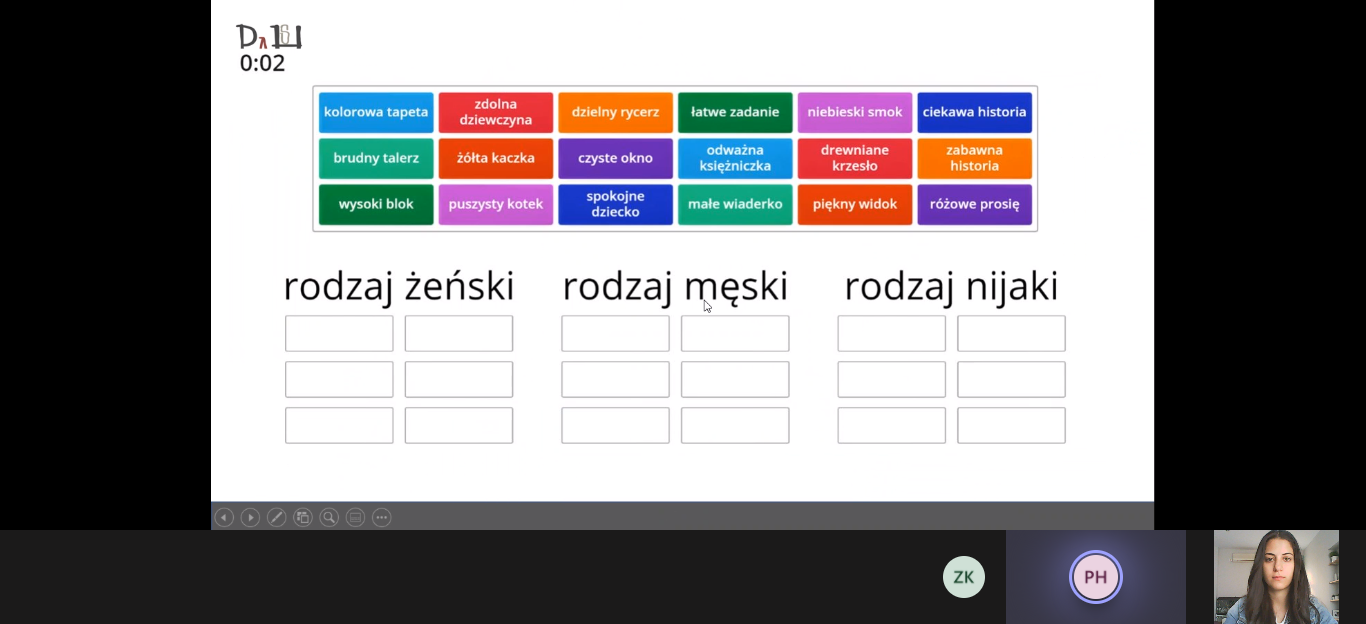E-learning y los video tutoriales: pautas para crear video tutoriales con éxito // E-learning and video tutorials: steps to create successful video tutorials

Sin lugar a dudas, nuestras vidas están dominadas por las nuevas tecnologías en la actualidad: tenemos acceso a internet desde nuestros smart phones las 24 horas del día, lo que significa que podemos ponernos al día con lo que ocurre en el mundo a cualquier hora y desde cualquier lugar. Además, el creciente número de herramientas de comunicación por internet, tales como el correo electrónico, los chats o las redes sociales como Facebook o Twitter, por nombrar algunas, ha favorecido la manera en la que hoy podemos ponernos en contacto con nuestros seres queridos. Teniendo en cuenta la relevancia que las nuevas tecnologías han adquirido hoy en día como fuente de información y comunicación, no nos debería sorprender el papel cada vez más importante de estas tecnologías en el aprendizaje.
Nos referimos ahora al e-learning o electronic learning (aprendizaje a distancia o electrónico). Entender en qué consiste este tipo de aprendizaje es muy sencillo: lo podríamos definir brevemente como la impartición de cualquier tipo de programa educativo o de formación a través de dispositivos electrónicos (Derek Stockley 2003). Por tanto, el e-learning requiere de ordenadores o cualquier otro tipo de dispositivo electrónico para su realización.
En la actualidad, el e-learning se ha convertido en una de las formas de aprendizaje más populares entre empresas e instituciones educativas de todo el mundo. Desde Inercia Digital nos esforzamos en promover este tipo de aprendizaje mediante la impartición de diversos cursos y la participación en proyectos tales como el Proyecto CooperActive, en el que actualmente estamos inmersos en la preparación de su tercera fase y cuyo principal objetivo no es otro que el de aumentar la calidad y la validación de la educación no formal en el trabajo con jóvenes a través de la adaptación, la extensión y difusión de una metodología única y unificada para los estándares de calidad ( ISO 29990: 2010) en la realización de actividades de educación no formal.
Esta creciente popularidad del e-learning se debe a la gran variedad de ventajas y facilidades que ofrece a sus usuarios. Entre estas ventajas nos gustaría destacar que el aprendizaje a distancia o electrónico promueve el aprendizaje autónomo del aprendiz. En otras palabras, proporciona al aprendiz con las herramientas y materiales necesarios para que pueda avanzar a su propio ritmo, establecer sus metas personales y, en general, tomar el control de su propio aprendizaje. Dichas herramientas y materiales pensados para promover y desarrollar el aprendizaje autónomo del aprendiz van desde tradicionales presentaciones Power Point y textos hasta videos de todo tipo (videoclips, webinars, …). En esta entrada al blog queremos ofrecer una visión general sobre el uso de video tutoriales como una forma interactiva de e-learning. En primer lugar podríamos definir al video tutorial como un sistema instructivo de auto-aprendizaje que proporciona, paso a paso, información para realizar una actividad determinada.
Hoy en día, si visitamos plataformas como Youtube o Vimeo podremos encontrar video tutoriales sobre cualquier tema que se nos venga a la cabeza – desde tutoriales que enseñan cómo crear una cuenta en Gmail hasta tutoriales que muestran cómo hacer una tarta de cumpleaños. Pero la pregunta es: ¿Cómo podemos usar estos video tutoriales para que sean eficaces en e-learning? A continuación hemos enumerado una lista de pautas que te podrían ayudar a crear interesantes y eficaces video tutoriales para tus empleados/alumnos:
- “¿Cuáles son mis objetivos? El primer paso para realizar un buen video tutorial es establecer qué objetivos pretendes conseguir y planificar qué vas a hacer para guiar a tus “alumnos” en su consecución.
- La segunda pauta que debes tener en cuenta al realizar un video tutorial es identificar a qué público va dirigido ese tutorial. De este modo te será más fácil desarrollar el contenido que pretendes enseñar así como difundir el mensaje que deseas transmitir.
- ¡Se realista! Asegúrate de que tu video tutorial se aproxima a la realidad de tus empleados/alumnos de modo que no suponga ningún problema para ellos trabajar o estudiar a distancia.
- Por último, la creatividad es un factor muy importante a tener en cuenta cuando desarrolles tu propio video tutorial. En otras palabras, ¡intenta “cautivar” a tus empleados/alumnos!
Si quieres saber más acerca de e-learning y video tutoriales, visita alguno de los links abajo.
Undoubtedly, we are currently dominated by technology: we can access to the Internet from our smart phones 24 hours a day, which means that we can find out what it is happening around the world at anytime and anyplace. Also, the increasing number of internet-based communication tools, such as email, chats and social networking websites like Facebook and Twitter to name a few, has improved the ways in which we can get in touch with our loved ones nowadays. Considering the relevance of all these technological devices in our lives as a source of information and communication, we should not be surprised about the increasingly important role of technology in learning.
We are referring to e-learning, which stands for electronic learning. Understanding e-learning is quite simple: it could be briefly defined as the delivery of a learning, training or education program by electronic means (Derek Stockley 2003). So it involves the use of a computer or any kind of electronic device.
At present, e-learning is becoming more and more popular among companies and educational institutions from all over the world. From Inercia Digital we strive to ensure a better dissemination of this kind of electronic learning through the teaching of a number of training courses as well as an active participation in projects such as the CooperActive Project, for which we are currently working on its third round and whose main objective is to increase the quality and validation of non-formal education (NFE) in youth work through adaptation, extension and dissemination of a single unified methodology and standards for quality in the conduct of NFE activities.
E-learning owes its increasing popularity to the wide range of benefits and facilities it offers to its users. Among those facilities we would like to highlight that e-learning enhances autonomous learning on the part of the trainee; that is, it provides learners with the necessary tools and materials so that they can advance at their own pace, set personalized learning goals and in general, take charge of their own learning. Those tools and materials that are thought to promote and develop autonomous learning range from traditional Power Point presentations and texts to videos (videoclips, webinars, …). In this post, we want to give a general account on the use of video tutorials as an interactive form of e-learning. A video tutorial is a visual self-paced instructional program that provides step by step information to carry out a specific activity.
Nowadays, if we go to platforms such as Youtube or Vimeo, we could find video tutorials about any topic we can imagine – from tutorials that show how to create a Gmail account to tutorials explaining how to make a birthday cake. But the question is: How to effectively use video tutorials in e-learning? Next, we have listed a number of steps that may help you develop interesting and useful video tutorials for your employees/students:
- “What are my goals?” The first step to making a good video tutorial is setting the goals of your tutorial and planning what you are going to do to help your audience accomplish those goals.
- The second step that you have to bear in mind when creating a video tutorial is your audience. Identifying the specific target audience that you want to reach should make it easier to develop targeted content and get the message you want to transmit across.
- Keep real! You need to make sure that your video tutorial comes as close to your employees/students experience as possible so that they do not have any problem when working/studying from home.
- Finally, creativity is also very important when making a video tutorial. In other words, keep engaging!
This is only an introductory list of steps you can follow when developing video tutorials. Below, you will find some links that may help you continue learning about video tutorials and e-learning.
Links:
http://www.derekstockley.com.au/elearning-definition.html
http://www.businessdictionary.com/definition/tutorial.html
https://elearningindustry.com/10-top-tips-interactive-video
Verónica Rivas Jimeno
Latest posts by Verónica Rivas Jimeno (see all)
- Finalizamos el curso “ICT for Academy” // End of the course “ICT for Academy” - 25/10/2016
- Entrega de certificados de “Train the Trainer” // Delivery of certificates of the course “Train the Trainer” - 24/10/2016
- Empezamos el curso “ICT for Academy” // First day of the “ICT for Academy” course - 11/10/2016




